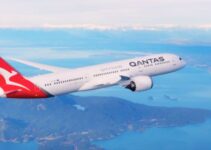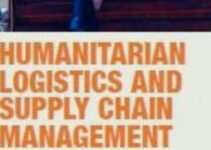Airbus SE is an aerospace European multinational corporation. The company came into existence in 1970. Today, we’ll discuss the value chain analysis of Airbus; primary and supporting activities in the process of value chain analysis Example Company. They are inbound and outbound logistics, operations, marketing, and customer service; infrastructure, HRM, technology, and procurement as an application of the value chain analysis process.
Substitutes of Airbus
- Spirit AeroSystems,
- General Dynamics,
- Embraer,
- Boeing
- Bombardier,
- China Aerospace Science and Technology Corporation,
- Gulfstream Aerospace,
- Lockheed Martin.
The Value chain analysis of Airbus would analyze the primary and supporting activities in the process of value chain analysis. They’re inbound and outbound logistics, operations, marketing, and services; infrastructure, HRM, technology, and procurement. Here’s Airbus value chain analysis company example as follows;
Value Chain Analysis of Airbus
Let’s discuss the primary and supporting activities involved in the process of value chain analysis of Airbus. It is an application of value chain analysis based on Porter’s model; some of the key elements and components of value chain analysis are as follows;
Primary Activities of Airbus
Some of the five main primary activities in the value chain analysis of Airbus are as follows;
Inbound Logistics of Airbus
I-Supplier Network
According to an estimate, Airbus has established a network of over 12,000 suppliers across the globe. They play a key role in the company’s growth and success; the aerospace brand considers them a part of the extended family. The external suppliers of Airbus offer various products and services relevant to the flying and non-flying parts.
II-External Sourcing
Airbus outsources approximately 80% of its work through external suppliers. The net worth of the company’s overall sourcing is roundabout 49.6 billion Euros. However, external purchasing contributes approximately 2 third of the company’s revenue and profitability.
III-Standards for Suppliers
Trust and transparency are the key elements of the Airbus production team. In fact, the aerospace company has set clear laws, standards, and regulations for the external suppliers and they need to comply with those laws and regulations. Some of the key elements that the company looks for are as follows;
- Offering shared commitment
- Operational reliability
- Proven record of industrial maturity
- Innovative and creative digital solutions in a complicated environment
Outbound Logistics of Airbus
I-Final Delivery
After completing the production and manufacturing process, the aerospace brand Airbus delivers the finished product of aircraft, helicopters, and other airlines to the customers. The company has established five delivery centers situated in the final assembly line countries like Canada, USA, China, Germany, and France.
II-Validation
Before signing the transfer of title and ownership, the aircraft client needs to thoroughly inspect their aircraft. The experts check and verify the conformity of the aircraft with the required contractual specifications. In fact, the Airbus team facilitates the entire testing, verification, and validation process.
III-Delivery Standards
The final delivery standards comprise of following steps;
- Provision of Rework – check and analyze quality or technical issues
- Acceptance Flight – inspecting the aircraft behavior during the flight and its other systems including passenger cabins
- Ground Checks – includes engine tests, cockpit checks, static aircraft systems, cabin and bays visual inspection, external surface
Operations of Airbus
I-Manufacturing & Assembly line Facilities
Airbus has established various assembly lines in various countries across the world for different types of aircraft and models. Some of them are as follows;
- A350, A330, and A320 family in France
- Intellectual property hub in Spain
- A320 family in Germany
- Commercial Wings Construction in Wales
- A400M in Spain
- A220 in Canada
- China A320 family
- A320 and A220 family in the USA
Marketing & Sales of Airbus
I-Customer Focused Approach
Airbus follows the customer-focused approach and it focuses on customer needs, preferences, and their comfort level while building the aircraft. It allows the company to build a long-term relationship with the end consumers. As a result, aviation companies prefer to buy Airbus aircraft while increasing their fleet size.
II-CSR & Sustainable
Airbus is a corporate socially responsible organization that engages in various activities and practices that help the company to promote a positive brand image. For instance, aerospace generates employment opportunities for the local communities; sustainable practices in the aviation industry; and decreasing the carbon footprint.
Services of Airbus
I-Multiple Services
Airbus offers a wide range of services to aircraft and airlines in various categories and some of them are as follows;
- Recycling and dismantling
- System Upgrade Services
- Repair and maintenance
- Training and development of mechanics for crew, engineers,
- Special expert services in terms of designing, consultation, Cybersecurity of airlines
Supporting Activities of Airbus
Some of the main supporting activities in the value chain analysis of Airbus are as follows;
Infrastructure of Airbus
Airbus has established a strong on-ground infrastructure of production and manufacturing facilities, supplier networks, quality external supplier operations, and assembly lines. The worldwide aerospace infrastructure helps the company to smoothly conduct such mega and mass-scale operations.
Technological Development of Airbus
According to an estimate, Airbus invested approximately 2.75 billion Euros in research and development. The objective of the aerospace brand is to gain a competitive edge and strengthen its position in the market. In fact, the company is investing a significant amount of capital resources and employing the latest digital technology to develop low-carbon-emitting aircraft and autonomous technology.
HRM of Airbus
Airbus has employed roundabout 135,000 employees to manage global operations. The human resource department of the company plays a key role in managing such a mass database of employees. In fact, it has established a diverse workforce, innovation, and creative workplace culture, and offers career growth opportunities for young graduates and experienced aviation industry professionals. In return for their services and commitment, the brand offers market-competitive salaries, incentives, benefits, and much more.
Procurement of Airbus
Airbus sources approximately 80% of its supplies, flying and non-flying equipment, and parts from its suppliers. In fact, the company has established a strong relationship with its suppliers across the world; and developed a strict code of conduct and regulations for the aviation industry. It helps the company to ensure the smooth functioning of its production and assembling operations.
Conclusion: Airbus Value Chain Analysis Example Company | Application of Value Chain Analysis Process
After an in-depth study of the value chain analysis of Airbus; we have realized that Airbus is the world’s leading aircraft multinational corporation. If you are learning about the Airbus value chain analysis example company; then you should keep in mind the abovementioned primary and supporting activities. They’re inbound and outbound logistics; operations, marketing and sales, and services; infrastructure, procurement, HRM, and technological development as an application of the value chain analysis process.
Ahsan is an accomplished researcher and has a deep insight in worldly life affairs. He goes Live 3 days a week on various social media platforms. Other than research writing, he’s a very interesting person.


